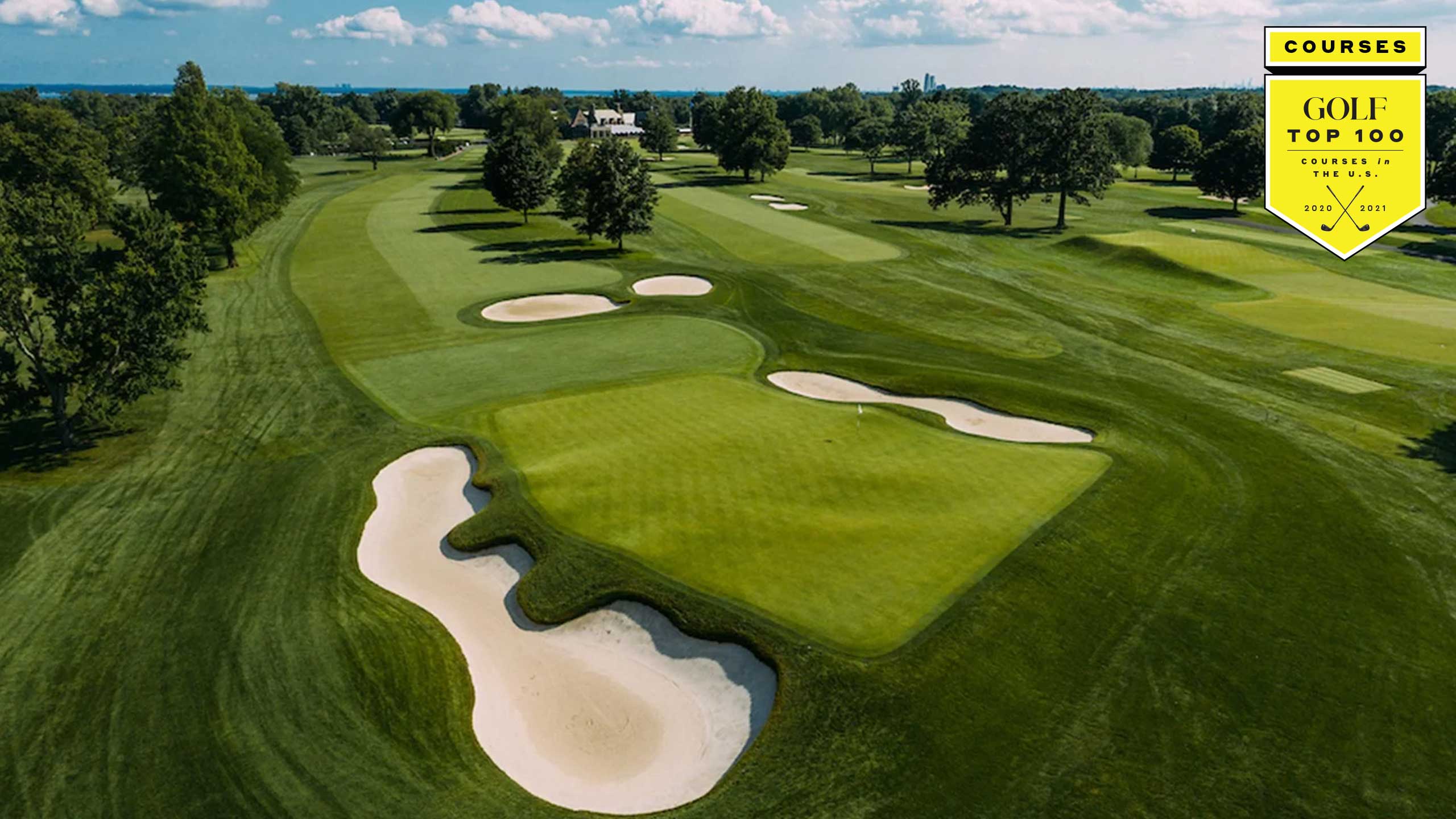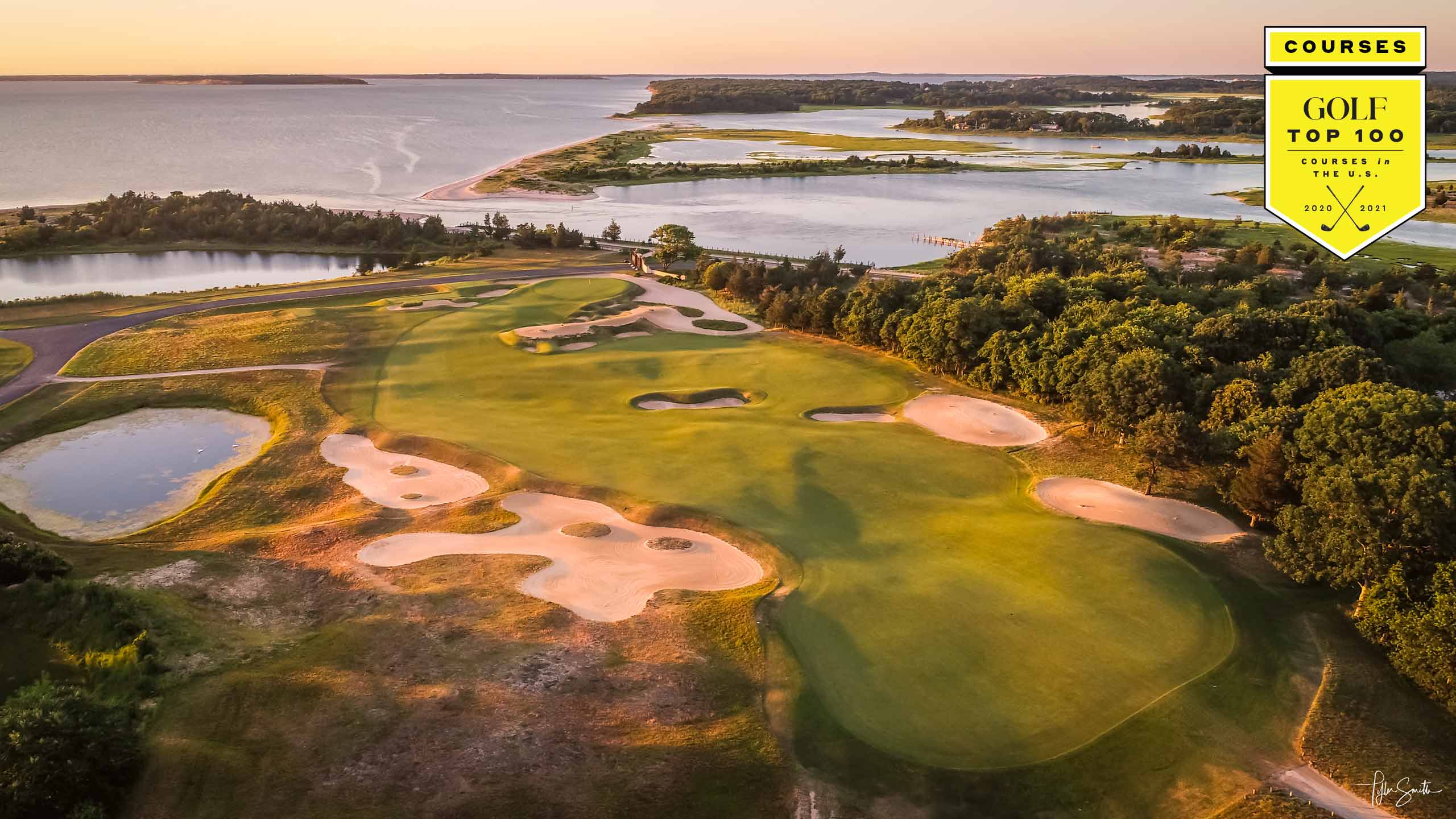Elections have consequences, as our biennial vote on the best 18-hole courses in the U.S proves. This year, more than a dozen stunning rookies make their Top 100 debut. That’s change we can believe in. Here are 4 key takeaways from our 2020-21 Top 100 Courses in the U.S. ranking.
Missing Pete Dye
For the first time since GOLF published its inaugural U.S. Top 100 ranking in 1983, Pete Dye is not among us. The course design icon passed away in January of this year. Yet his influence is strongly felt throughout the ranking. He leaves behind a litany of great layouts (six in the Top 100, four of which are in the Top 50) as well as numerous protégés. Without trying to simplify a complex topic, Dye imparted some key truths to all architects: Be on-site, get dirt under your nails and make it happen yourself. His disciples include Bill Coore and Tom Doak — of the living architects, these designers appear the most in our U.S. Top 100, with seven and five-and-a-half original works, respectively. Pete was an original, too, and along with his wife, Alice, did as much to shape modern architecture as anyone.
The pandemic effect
Covid certainly manifested itself in this year’s rank. Some clubs adopted a “no guests” policy, which precluded our panelists from visiting many private courses. From a travel perspective, our global panelists ceased stateside visits in February, yet because of the travel ban, our U.S.-based panelists were able to see more courses in America than they might have otherwise. Thus, 2020 turned out to be a fine year for introspection for our U.S. crew. Although we will never know how the results would have been tweaked in the absence of the pandemic, we’re confident that these rankings remain the game’s best and most thoughtfully considered.
Greens with envy
Overstating the importance of greens is nearly impossible. For starters, they’re the targets for every hole ever built! One easily identifiable characteristic of this year’s rankings is that the courses with the best greens continue their dominance on the list. It starts with Pine Valley (No. 1, again), which many argue has the country’s best complexes in terms of contour and variety. As much as the course’s fierce appearance, Pine Valley’s greens have kept it glued to the top of our rankings for decades.
What our latest Top 100 Courses in the U.S. list reveals about the state of course designBy: Ran Morrissett
As the USGA moves toward rethinking a new rota of U.S. Open venues, other household-name courses with great greens — Oakmont (No. 5), Pinehurst No. 2 (No. 11) and Winged Foot (No. 15) — are sure to take center stage. Also, take a look at the architects with the most courses represented. What’s the connection? They were/are master green builders!
As the restoration effort continues to gain momentum and greens are pushed back to their original edges, it’s wonderful to see lesser-known gems like Ross’ Beverly and Mountain Ridge or Travis’ Hollywood or Tillinghast’s Somerset Hills gain appropriate fame. Just one look at Beverly’s 17th green, the 8th green at Mountain Ridge, the 6th green at Hollywood or the 5th green at Somerset Hills confirms as much. If you’re disgruntled that a particular course isn’t ranked higher, ask yourself if its greens are truly special. If they’re fine (but not great), you likely have answered your own question. Courses most likely to make the most headway in 2022? You guessed it: courses with great greens.

Knocking on the door
Courses that fell just outside the Top 100 feature more of the same characteristics as the courses that actually made it, whether you prefer the old-guard style or the new. Restoration work by Ron Forse at two C.H. Alison works (Davenport GC in Iowa and Kirtland outside of Cleveland) have both Golden Age gems on the rise. Two of Ron Prichard and Tyler Rae’s efforts (Beverly CC in Chicago and Cedar Rapids) have placed even more Donald Ross designs on the precipice of Top 100 inclusion as well.
Inside GOLF’s Top 100 Courses vote: How we decide our rankingsBy: Ran Morrissett
Truth be told, the statistical difference between No. 80 on our list (Sheep Ranch) and No. 120 (Boston GC) is the smallest it has ever been. Interlachen and Erin Hills (both former hosts of our national championship) fell out of the Top 100 by the tiniest of margins. So did longtime stalwart Scioto, but both the club and the panel are keen to see a purer version of Ross’ original effort versus the one that exists today. Scioto shuts next year, and when our next U.S. ballot rolls out in 2022, don’t be surprised to see it make a concerted charge.
Also, since reimagining the makeup and marching orders of the GOLF ranking panel in 2019, there appears to be a willingness to embrace different forms of architecture like never before. (Kingsley’s inclusion at No. 79 is an example.) Mike Strantz’s Tobacco Road has its highest finish ever (No. 123) and Tom Doak’s reversible course in Michigan (Forest Dunes, No. 115) also joins the Top 120. Given that golf’s ultimate appeal is its dazzling array of diverse playing fields, this is a very encouraging and exciting trend. The aforementioned Sand Hollow — something straight out of a science-fiction movie — might even make it in, which would be a first for Utah. Trust us: If design excellence is out there, our panel will find it. Stay tuned.












